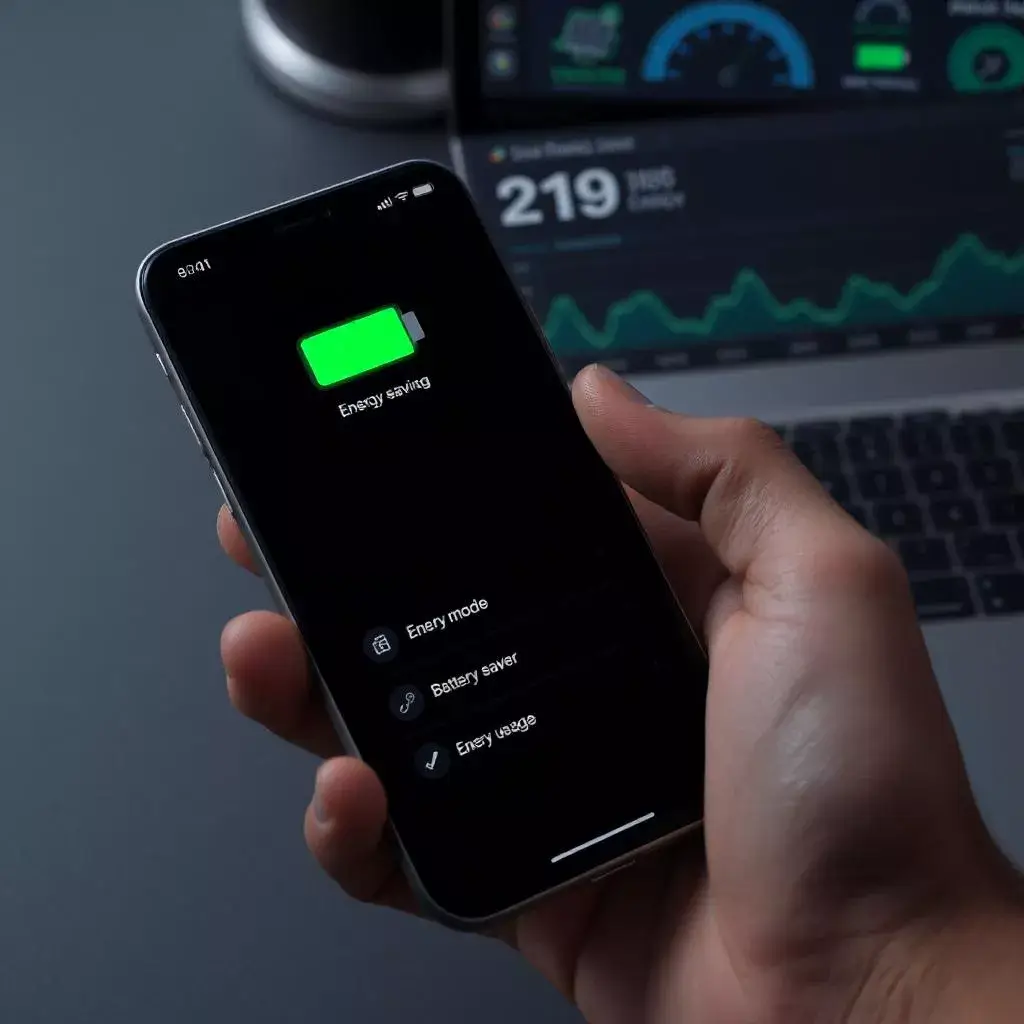1. Introduction
- Smartphones are an essential part of daily life, but they consume significant energy both during usage and while charging. Making your smartphone more energy-efficient can help extend battery life, reduce electricity consumption, and contribute to environmental sustainability.
- This guide will explore practical ways to optimize your smartphone's energy efficiency.
2. The Importance of Energy-Efficient Smartphones
Extended Battery Life: Reducing power consumption means fewer charges and longer battery lifespan.
Lower Electricity Costs: Less frequent charging reduces energy bills over time.
Reduced Electronic Waste: A longer-lasting battery means fewer battery replacements and less waste.
Environmental Benefits: Lower energy consumption reduces carbon emissions.
Improved Device Performance: Efficient settings can lead to better smartphone speed and usability.
3. Optimizing Display Settings for Energy Savings
Lower Screen Brightness: Reducing brightness decreases energy usage significantly.
Enable Dark Mode: OLED and AMOLED screens use less power in dark mode.
Reduce Screen Timeout: Shorter screen timeout prevents unnecessary power drain.
Use Adaptive Brightness: Automatically adjusts brightness based on lighting conditions.
Avoid Live Wallpapers: Static backgrounds consume less power than animated ones.
4. Managing Background Apps for Efficiency
Close Unused Apps: Apps running in the background drain battery and processing power.
Restrict Background Activity: Use battery settings to limit background activity for specific apps.
Disable Auto-Sync: Reducing automatic updates can minimize energy consumption.
Use Lite Versions of Apps: Lighter apps use fewer resources and less power.
Enable Battery Optimization: Activate power-saving features for better efficiency.
5. Optimizing Connectivity for Power Savings
Turn Off Bluetooth and Wi-Fi When Not Needed: Reduces constant searching for connections.
Use Airplane Mode in Low-Signal Areas: Prevents excessive battery drain from searching for a signal.
Disable Location Services for Unused Apps: Limits GPS power consumption.
Use Wi-Fi Over Cellular Data: Wi-Fi consumes less battery compared to mobile networks.
Turn Off Hotspot When Not in Use: Personal hotspots can drain power quickly.
6. Smart Charging Practices for Longer Battery Life
Avoid Overnight Charging: Prolonged charging can degrade battery health.
Charge Between 20% and 80%: Prevents deep discharge and overcharging.
Use Original or Certified Chargers: Ensures optimal charging efficiency and safety.
Enable Optimized Charging Features: Some smartphones have built-in settings to manage charging habits.
Avoid Using the Phone While Charging: Reduces heat and power strain.
7. Reducing Notifications and Background Refresh
Limit Push Notifications: Reduces screen wake-ups and energy drain.
Disable Auto-Sync for Emails and Apps: Saves battery by refreshing data less frequently.
Use Do Not Disturb Mode at Night: Prevents unnecessary alerts and screen wake-ups.
Turn Off Vibrations for Notifications: Vibrations use more power than sound alerts.
Customize App Refresh Settings: Set only essential apps to refresh in the background.
8. Using Power-Saving Modes Effectively
Enable Battery Saver Mode: Reduces background processes and limits performance to save power.
Use Ultra Power-Saving Mode: Available on some devices, this mode restricts apps to essential functions.
Turn Off Unnecessary Features: Disable features like 5G, Always-On Display, or haptic feedback.
Use Adaptive Battery Settings: Learns usage patterns and adjusts power allocation accordingly.
Schedule Battery Saver Activation: Automates power-saving when the battery is low.
9. Managing Apps That Consume the Most Battery
Check Battery Usage in Settings: Identifies power-hungry apps.
Uninstall or Replace Heavy Apps: Consider using alternatives with lower energy consumption.
Turn Off Auto-Playing Videos in Apps: Prevents unnecessary media consumption.
Use Web-Based Apps Instead of Installed Versions: Some websites use less power than full apps.
Update Apps Regularly: Ensures efficiency improvements and bug fixes.
10. Choosing an Energy-Efficient Smartphone
Look for Phones with Larger Batteries: Ensures longer usage per charge.
Select Devices with Energy-Efficient Processors: Newer chipsets are optimized for low power consumption.
Check Display Technology: OLED and AMOLED screens consume less power than LCDs.
Consider Fast-Charging Capabilities: Reduces overall charging time and energy use.
Opt for Software with Power Optimization Features: Brands like Apple and Google offer enhanced battery management tools.
11. The Role of Renewable Energy in Smartphone Charging
Use Solar Chargers: Environmentally friendly alternative for on-the-go charging.
Charge Using Renewable Energy Sources: Plug into a solar-powered or green energy grid.
Invest in Power Banks with Solar Panels: Ensures energy efficiency during travel.
Use Energy-Efficient Charging Adapters: Reduces energy loss while charging.
Monitor Electricity Usage While Charging: Smart plugs can track energy consumption.
12. Comparison of Smartphone Energy-Saving Features
| Feature | Benefits | Power Savings Potential |
| Dark Mode | Reduces screen power usage | Up to 30% |
| Airplane Mode | Prevents signal searching | Varies |
| Battery Saver Mode | Limits background activities | 10-20% |
| Optimized Charging | Protects battery lifespan | Long-term |
| Wi-Fi Over Mobile Data | Uses less battery power | Moderate |
13. Future Trends in Energy-Efficient Smartphones
Graphene Batteries: Faster charging and longer life cycles.
AI-Powered Battery Management: Smarter energy allocation based on user habits.
Wireless Charging Efficiency Improvements: More effective wireless power transfer.
Eco-Friendly Manufacturing: Sustainable materials reducing environmental impact.
Energy-Harvesting Technologies: Future devices may generate power through movement or solar integration.
14. Conclusion
Making your smartphone more energy-efficient is not only beneficial for your battery life but also reduces overall electricity consumption and environmental impact. By implementing these simple changes, you can enjoy better performance, save energy costs, and contribute to sustainability efforts.
Small changes in daily smartphone usage, such as optimizing settings, using battery-saving modes, and adopting smart charging habits, can make a significant difference in energy efficiency. As technology advances, energy-efficient smartphones will become even more essential in our eco-conscious world.
Disclaimers
Power savings may vary based on smartphone model and usage patterns.
Some features may not be available on all devices or operating systems.
Renewable energy charging effectiveness depends on geographic location and sunlight availability.
Battery health depends on charging habits and environmental conditions.
The comparison table provides estimated savings based on industry studies and user reports.
Author: Dipika Kumari
Publication Date: 27-03-2025
Email: [email protected]
